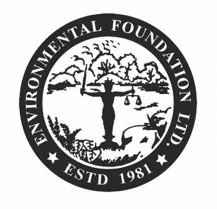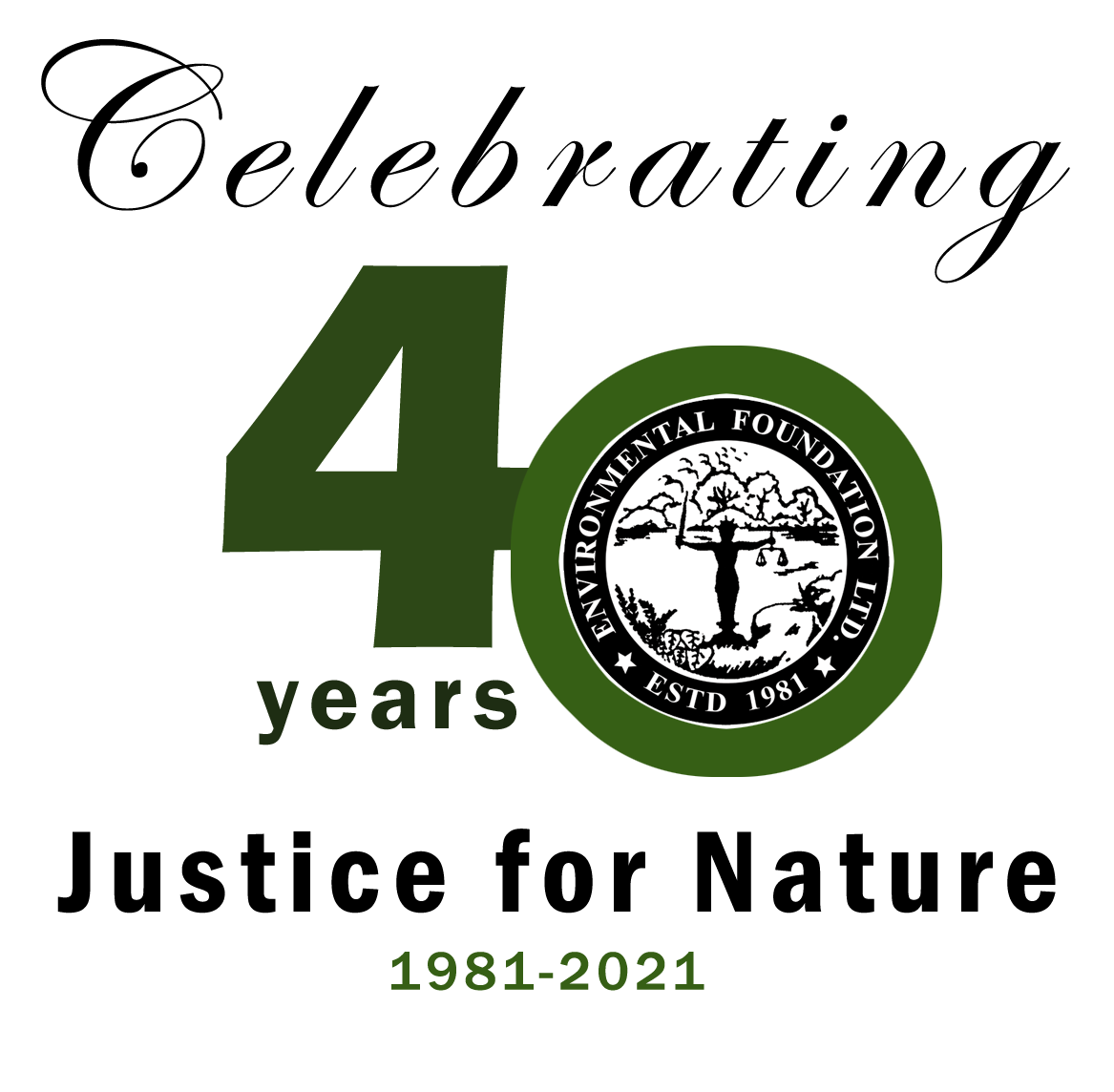කර්තෘ: කුමුදිකා පෙරේරා උධෘතය: තොරතුරු දැනගැනීමේ අයිතිවාසිකම හරහා රාජ්ය පරිපාලනයේ විනිවිදභාවය, සහ වගකිවයුතුභාවය ළඟා කරගත හැකිය. මුල් අයිතිය: Daily Mirror මහජන අදහස් විමසීම සහ මහජන සහභාගීත්වය, පාරිසරික බලපෑම් තක්සේරු කිරීමේ (EIA) වාර්තා ක්රියා පටිපාටියේ වැදගත් අංගයක් උසුලන බව මින් පෙර සාකච්ඡා කරන ලදී. එමෙන්ම මහජනතාවට පරිශීලනය කළ හැකි තොරතුරු ද මහජන සහභාගීත්වය ඔප්නැංවීමට අවස්ථාව සලසයි. ශ්රී ලංකා ප්රජාතාන්ත්රික සමාජවාදී ජනරජයේ දහනවවන ව්යවස්ථා සංශෝධනය, 14A ව්යවස්ථාව මගින් තොරතුරු දැනගැනීමේ අයිතිවාසිකම
By: Kumudika Perera RTI can be a tool for greater transparency and accountability in the EIA process to facilitate public participation effectively. Image Credits- Daily Mirror - Header In EFL’s previous blogs, we have discussed how and why public participation is vital in the process of Environmental Impact Assessment (EIA). Information fed to the public domain is thus important as information increases the effectiveness of public participation and is viewed as a prerequisite for a successful democracy. In
By: Piyumi Wattuhewa Ensuring public participation in environmental decision-making is fundamental in fostering accountability and transparency in environmental policy building frameworks. Image Credits: Luis del Río on Unsplash The intrinsic inter-relationship between environmental conservation and the affirmation of human rights has been acknowledged not only through numerous multilateral environmental agreements such as Aarhus and Espoo, but also through human rights treaties such as the International Covenant for Civil and Political Rights (ICCPR), International Covenant on Economic, Social and Cultural
කර්තෘ: කාංචනා ෂෙහානි Image Credits: CEB උධෘතය: මෑත කාලීන ඉතිහාසයේ තීරණය වූ පාරිසරික වශයෙන් වැදගත් මහජන අර්ථසාධක නඩුකරයක් ලෙසට චුන්නාකම් නඩුව හැඳින්විය හැක. ආණ්ඩුක්රම ව්යවස්ථාව මඟින් තහවුරු කරනු ලැබූ මූලික අයිතිවාසිකම් පුළුල් ලෙස අර්ථ නිරූපනය කරමින් ව්යවස්ථාපිත අධිකාරීන් විසින් රාජ්යයේ ස්වභාවික සම්පත් මහජනතාව වෙනුවෙන් භාරයක් ලෙස ආරක්ෂා කොට සුරක්ෂිත කිරීමේ වගකීම පැහැදිලි කර දුන් විජයග්රාහී නඩු තීන්දුවකි. සිද්ධිමය කරුණු 1958 සිට චුන්නාකම් ප්රදේශයේ සහ යාපනය අර්ධද්වීපයේ ප්රදේශවාසීන්ගේ විදුලිබල අවශ්යතාවයෙන් සැලකිය යුතු කොටසක් නිෂ්පාදනය කෙරුණේ රජයට අයත්
කර්තෘ: කාංචනා ෂෙහානි Image Credits: Sunday Observer උධෘතය – IEE වාර්තාව සළකා බැලීමෙන් පසුව ව්යාපෘතිය සඳහා අනුමැතිය ලබාදීම හෝ, විය හැකි බලපෑම්වල වැදගත්කම සහ සංකීර්ණත්වය අනුව EIA වාර්තාවක අවශ්යතාව ද පෙන්වා දිය හැක. රාජ්යයකට තම සංවර්ධනීය ඉලක්ක සපුරාගැනීමේ කාර්යයේදී, තම ස්වභාවික සම්පත් ආරක්ෂා කරගනිමින් තිරසාර සංවර්ධනයක් තහවුරු කිරීම සඳහා යම් බැඳියාවක් පවතී. ඒ හේතුවෙන් යම් ව්යාපෘතියක් දියත් කිරීමට පෙර එමඟින් සිදුවිය හැකි පාරිසරික, සමාජ- ආර්ථික සහ සංස්කෘතිමය බලපෑම් පිළිබඳව
Bulankulama and Others v Secretary, Ministry of Industrial Development and Others
[2000] 3 Sri LR 243
By: Kumudika Perera
Image Credits: efl.lk
Bulankulama case is celebrated as a judgement that championed environmental conservation against an erratic development project. This blog highlights its relation to the Environmental Impact Assessment (EIA) process.
Court: Supreme Court (Fundamental Rights)
Majority opinion by: Amerasinghe, J. (Unanimous Judgement)
Facts:
කර්තෘ: කාංචනා ෂෙහානි උධෘතය: සංවර්ධන ක්රියාවලිය මූලික පරිසර සංකල්පයන්ට අනුගතව, ස්වභාවික පරිසරය ආරක්ෂාවන පරිදි ධරණීයව සිදුකිරීමට රාජ්යයට වගකීමක් ඇත. Image Credits: Rajiv Perera on Unsplash ස්වභාවික සම්පතින් පොහොසත් ශ්රී ලංකාව, ආසියාතික කලාපය තුළ ඉහල ජෛව විවිධත්වයකට උරුමකම් කියනු ලබන රාජ්යයක් බව අතීතයේ සිට ඉතා ප්රචලිත කරුණකි. කෙසේ වුවද, දැනට දශක කිහිපයකට පෙර සිට සීඝ්රයෙන් වැඩිවෙමින් පවතින සංවර්ධන ව්යාපෘතීන් මඟින් ස්වභාවික පරිසර පද්ධතීන් වෙත සිදු කරනු ලබන බලපෑම සුළුපටු නොවේ. 1992 පරිසරය හා සංවර්ධනය පිලිබඳ රියෝ සම්මුතියේ 4 වන ව්යවස්ථාව මඟින් දක්වනුයේ,
By: Anjalee Udawatta & Lakshitha Edirisinghe The EIA identified key issues associated with the project. Several scenic waterfalls were threatened due to the reduction of water flow. Image source: olivelankaholidays.com A crucial component of Sri Lanka’s natural scenic beauty is the cascading waterfalls emanating from the central hills. While serving as major tourist attractions, these waterfalls also support the livelihoods of surrounding communities while being a safe haven for several faunal species. The dire need to protect
By: Piyumi Wattuhewa Being sensitive to gender issues in environmental projects is essential in order to prevent potential commitments to widen the already existing gender disparities. Image Credits: Nandhu Kumar on Unsplash Environmental conservation and the relevance therein to development is a gendered issue as much as it is an environmental issue. Even though it is rarely discussed as such in the Sri Lankan contexts, there are numerous notable intricacies and correlations between the status of women
By: Piyumi Wattuhewa Passing legislations enabling the provisions of environmental conventions would pave the way for the better implementation of EIA procedures. The amount of international conventions constituting provisions relating to the environment and environmental protection is vast, especially when one considers the subject specific conventions as well as the regional and bilateral agreements that state parties enter into. Environmental Impact Assessment is often given effect in such agreements, though often not expressly; but can frequently
- 1
- 2





